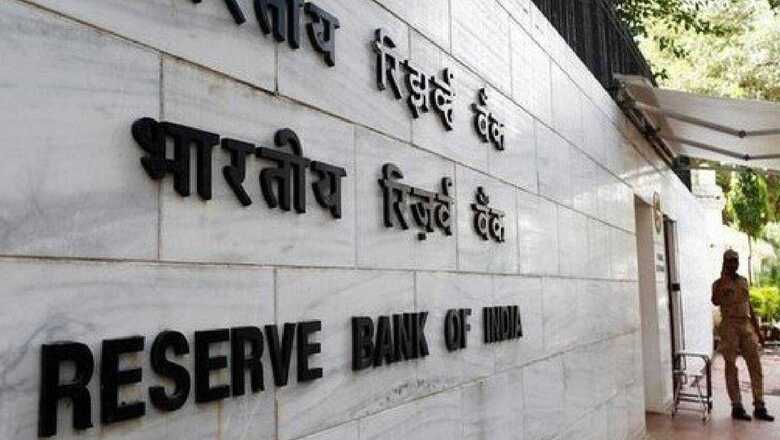
views
The Reserve Bank on Wednesday expectedly raised the benchmark lending rate by 35 basis points (bps) – the fifth increase since May – saying it remains focussed on bringing down the inflation to a tolerable limit.
The move to raise the rate will make loans – including housing, auto, and corporate credit expensive. Terming the Indian economy a bright spot in the otherwise gloomy world, the Reserve Bank of India (RBI) lowered its estimate of GDP growth to 6.8 percent in the fiscal ending March 31, 2023, from an earlier forecast of 7 percent.
It, however, kept the inflation forecast unchanged at 6.7 percent for the current fiscal and projected it to come down below the upper tolerance limit of 6 percent in the fourth quarter of the current financial year.
The Consumer Price Index (CPI) based inflation, which RBI factors in while fixing its benchmark rate, stood at 6.7 percent in October. Retail inflation has been ruling above the RBI’s comfort level of 6 percent since January this year.
RBI Governor Shaktikanta Das said the central bank remains nimble and flexible in its approach to dealing with the price situation.
Also Read: Maruti Suzuki Discount Offer in December 2022: Alto, Swift, Wagon R and More
The six-member monetary policy committee (MPC) headed by RBI Governor raised the key lending rate or the repo rate by 35 basis points to 6.25 percent.
With the latest hike, the repo rate, or the short-term lending rate at which banks borrow from the central bank has now crossed 6 percent.
This is the fifth consecutive rate hike after a 40 basis points increase in May and 50 basis points hike each in June, August, and September. In all, the RBI has raised the benchmark rate by 2.25 percent since May this year.
Consequently, the standing deposit facility (SDF) rate is adjusted to 6 percent, and the marginal standing facility (MSF) rate and Bank rate to 6.50 percent.
The MPC also decided to remain focused on the withdrawal of the accommodative stance to ensure that inflation remains within the target going forward while supporting growth.
The panel also decided by a majority — 5 out of 6 members — voted to increase the policy repo rate by 35 basis points while Jayanth R Varma voted against the hike.
Das also said the overall liquidity remains in surplus, with average daily absorption under the liquidity adjustment facility (LAF) at Rs 1.4 lakh crore during October-November compared to Rs 2.2 lakh crore in August-September.
On the inflation outlook, the governor said it is expected to be at 6.7 percent for the current fiscal. Concerning economic growth, the RBI has slashed its GDP forecast to 6.8 percent from an earlier estimate of 7 percent for the current fiscal.
“Growth remains resilient in such a hostile environment…inflation in India is lower than other countries,” he said, adding even at the lower GDP growth rate, India will remain among the fastest-growing major economies.
In its last bi-monthly policy review released in September, the RBI had slashed the economic growth projection for the current financial year to 7 percent from 7.2 percent earlier on account of extended geopolitical tensions and aggressive monetary policy tightening globally.
Read all the Latest Auto News here




















Comments
0 comment